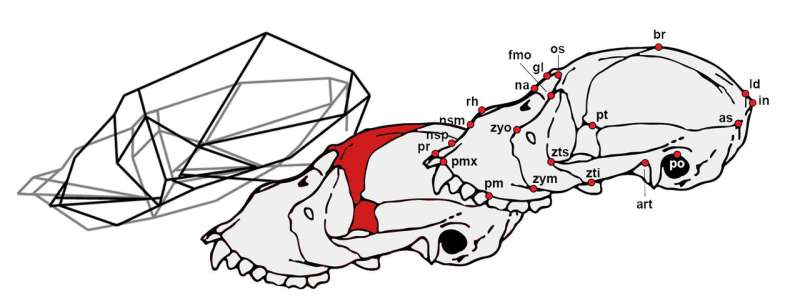Credit: Fiorenza and Bruner (2017)
Emiliano Bruner, of the Paleoneurobiology Group of the Centro Nacional de Investigación sobre la Evolución Humana (CENIEH), has just published an article in the American Journal of Primatology, which analyzes the peculiar cranial structure and variability of the best-known species of South American howler monkey, Alouatta seniculus, using multivariate statistics and geometric models in three dimensions.
Howler monkeys, which are among the largest primates in Central and South America, have a very peculiar cranial structure, with a highly flexed face that projects forward, a low vault, limited cerebral volume and a brain with few convolutions.
They also carry their head in front of their shoulders, unlike almost all other primates which have it more above the body; they have a very pronounced mandible, associated to major masticatory muscles, a diet based on leaves, and large vocal sacs for producing their "howls," which are essential for social relationships.
According to the results of the study, at an anatomical level, the variations in the face and vault are not independent, but rather integrated, following patterns influenced basically by the size of the cranium. The limited development of the vault might be one of the main causes of these modifications, which involve the architecture of the face secondarily.
"The height of the vault might also influence the pattern of formation of the bones of the side wall of the cranium, which is different in this primate from all other South American monkeys. And the differences between males and females appear to be due only to the size," says Emiliano Bruner.
More information: Luca Fiorenza et al. Cranial shape variation in adult howler monkeys (Alouatta seniculus ), American Journal of Primatology (2017). DOI: 10.1002/ajp.22729
Journal information: American Journal of Primatology
Provided by CENIEH























